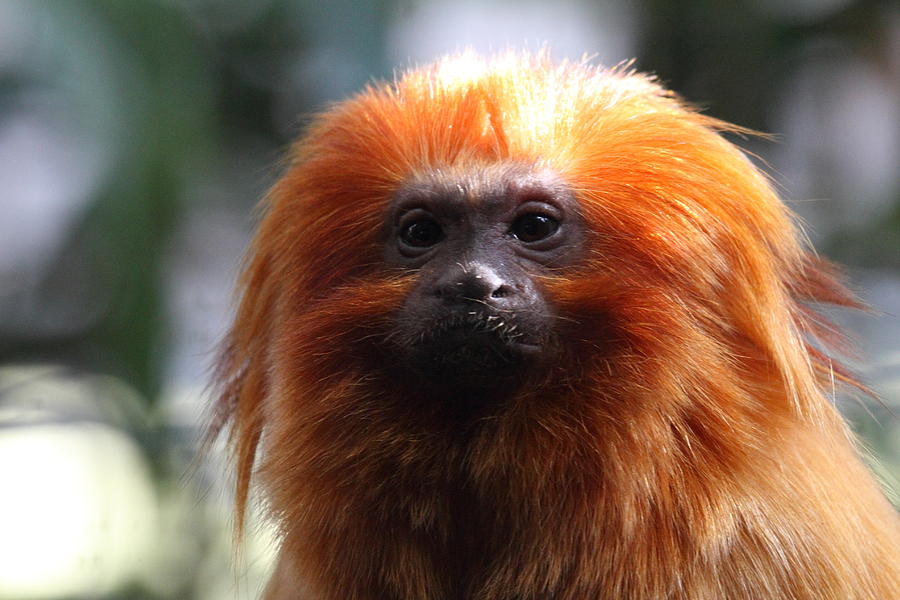Zoos' Bitter Choice: Which species must live and which must survive
 Newsflash people. Zoos have a dark side. However, don't be so quick to blame zoos because it's not their fault. Let's give a scenario. At the St. Louis Zoo, 13 species of monkeys and apes reside at the primate house. Just 30 years ago, there were 36 species. Zoos are increasingly being asked to save species, such as Grevy's zebras, mountain gorillas, and Wyoming toads. More and more species are disappearing, with more than two-thirds of the world's amphibians in danger of extinction, as well as one-fourth of mammals and seabirds. However, cutbacks in public funding and a poor economy has led to zoos making tough decisions. The simple fact is that zoos cannot save even 2% of the world's species, as they do not have the resources capable of sustaining mass populations. What is the future for species in zoos?
Newsflash people. Zoos have a dark side. However, don't be so quick to blame zoos because it's not their fault. Let's give a scenario. At the St. Louis Zoo, 13 species of monkeys and apes reside at the primate house. Just 30 years ago, there were 36 species. Zoos are increasingly being asked to save species, such as Grevy's zebras, mountain gorillas, and Wyoming toads. More and more species are disappearing, with more than two-thirds of the world's amphibians in danger of extinction, as well as one-fourth of mammals and seabirds. However, cutbacks in public funding and a poor economy has led to zoos making tough decisions. The simple fact is that zoos cannot save even 2% of the world's species, as they do not have the resources capable of sustaining mass populations. What is the future for species in zoos?How do zoos choose their animals? Unfortunately, most hard-core animal lovers and zoo workers are forced to make cold decisions when it comes to saving the world's animals. So, zoos exhibit popular animals, like California sea lions, African lions, and zebras which draw large crowds even though they are not in any particular danger. After the crowd-drawing attractions, zoos exhibit endangered animals. If they're crowd-pleasers like Asian elephants, polar bears, or snow leopards, all the better. It is hard to say that every zoo exploits their animals in order to survive. However, that is not necessarily a bad thing if they provide good care for their animals and serve as important educational services.

This enchanting golden monkey above is the golden lion tamarin. Once, their numbers dwindled to a mere 150 individuals in the wild. Thanks to efforts by zoos (most notably the National Zoo) and a successful reintroduction program), an estimated 1,000 golden lion tamarins now live in the wild, with a population of about 500 inside zoos in case the wild population dwindles. The golden lion tamarin breeding and reintroduction program is one of the most successful of all zoo programs, but other species such as Przewalski's horses, Arabian oryx, and Mexican wolves have also had great success. Unfortunately, these successes are the exception rather than the norm.

The polar bear is one of the most popular zoo animals, along with elephants, gorillas, and tigers. To have a polar bear, is one of the most ultimate status symbols among zoos. Why? Polar bears are protected by the Marine Mammal Protection Act, meaning its illegal to take them from the wild. This is bad news for zoos, who need a healthy gene pool for a sustainable population of animals. Inbreeding of animals can cause a host of birth defects. Look at white tigers. They're only supposed to be 1 out of every 10,000, but the number has risen due to inbreeding. Now, they're cross-eyed and have multiple problems that shorten their lifespans. Zoos must either breed polar bears or rescue orphaned cubs. There are 64 polar bears in captivity in American zoos, far short of the 200 considered optimal for maintaining the population over 100 years. So zoos have been adding to the numbers of some species while culling others at the same time. St. Louis says it houses 400 more animals but 65 fewer species or subspecies than it did in 2002.

How the shrinking slots are allocated is becoming more considered and scientific. As conservation pressures mounted in the 1990s, the Association of Zoos & Aquariums began putting together groups of zookeepers that look across entire families of species and advise on which ones should be made priorities and which ones should be phased out. All sorts of criteria are considered, including uniqueness, level of endangerment in the wild, importance of the animal’s ecological role, and whether there is an adequate population in captivity for effective breeding.
Zoos are essentially given a menu of endangered species that the association is trying to maintain and can then choose according to their particular needs. But final decisions are often as much about heart as logic. For example, the St. Louis Zoo spent $20 million on a massive polar bear habitat. One problem: the zoo doesn't have polar bears. The zoo hopes to procure either captive-bred cubs or rescue orphaned cubs from Canada.

So, in 2008, a North American advisory group on the viability of hoofed species recommended that the animals be phased out of North American zoos and space given to another subspecies of endangered gazelle with more promising prospects.
Zoos cannot save every species. Even idiots should realize this. They can save some species, but their resources are not enough to save them. The sad thing is that the wild is disappearing fast. Every day, 100 African elephants are killed by poachers. Every day the Amazon forest disappears faster. Every day, tigers are killed for their skins. It may be that in the future, zoos hold the only representation of many species. Hopefully humanity can sustain the animal populations longer or our ecosystem will suffer. What do you think about how zoos deal with animals?